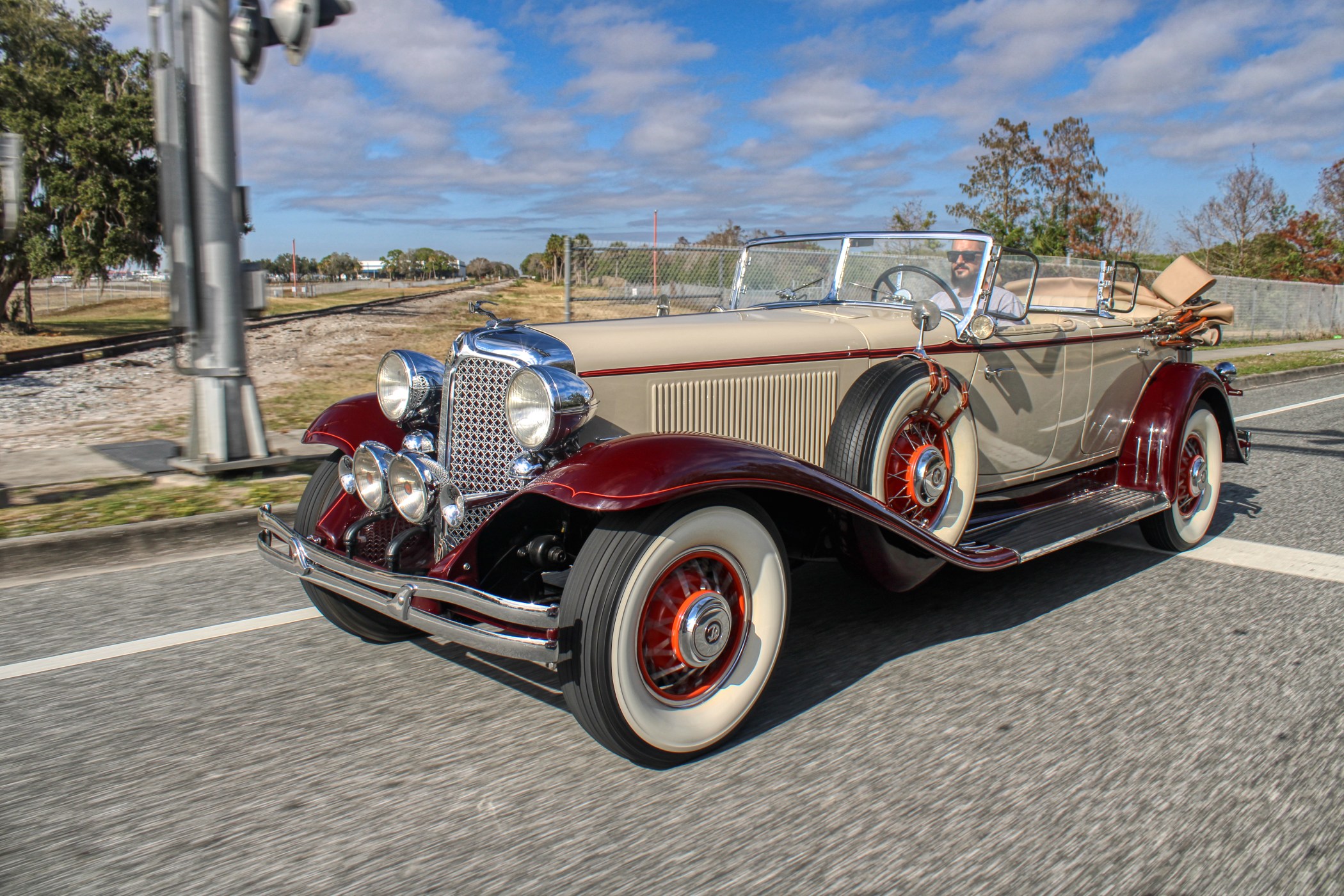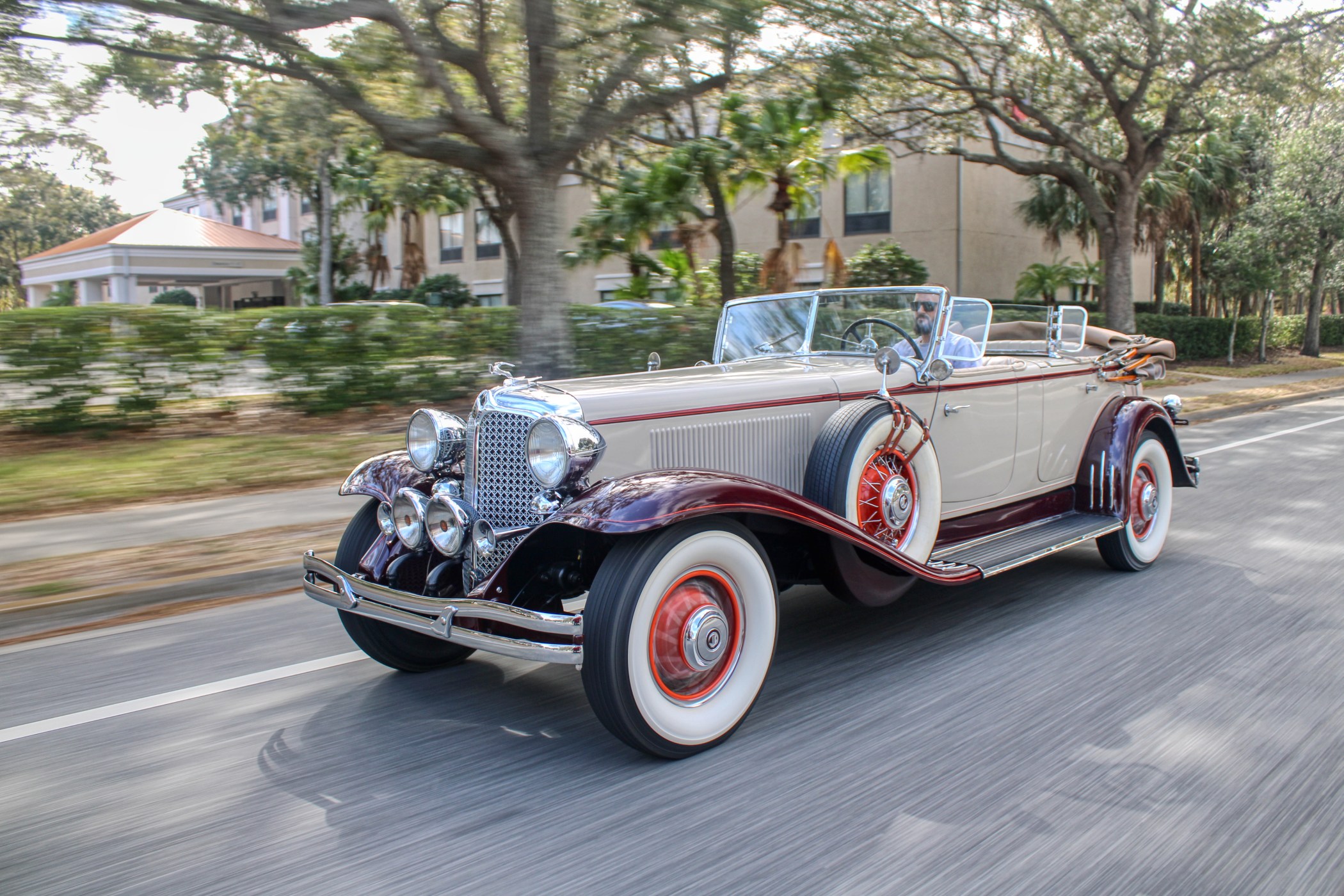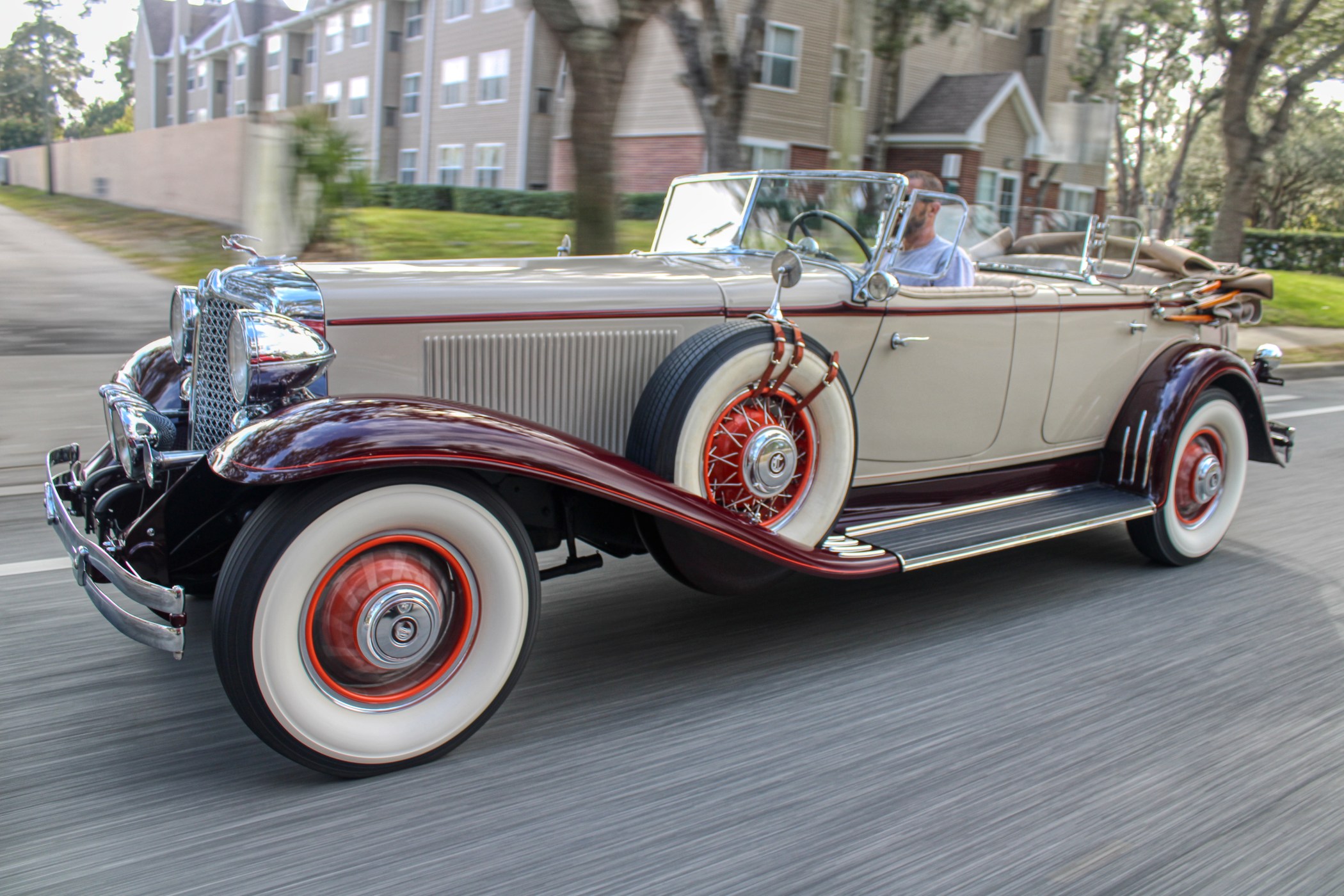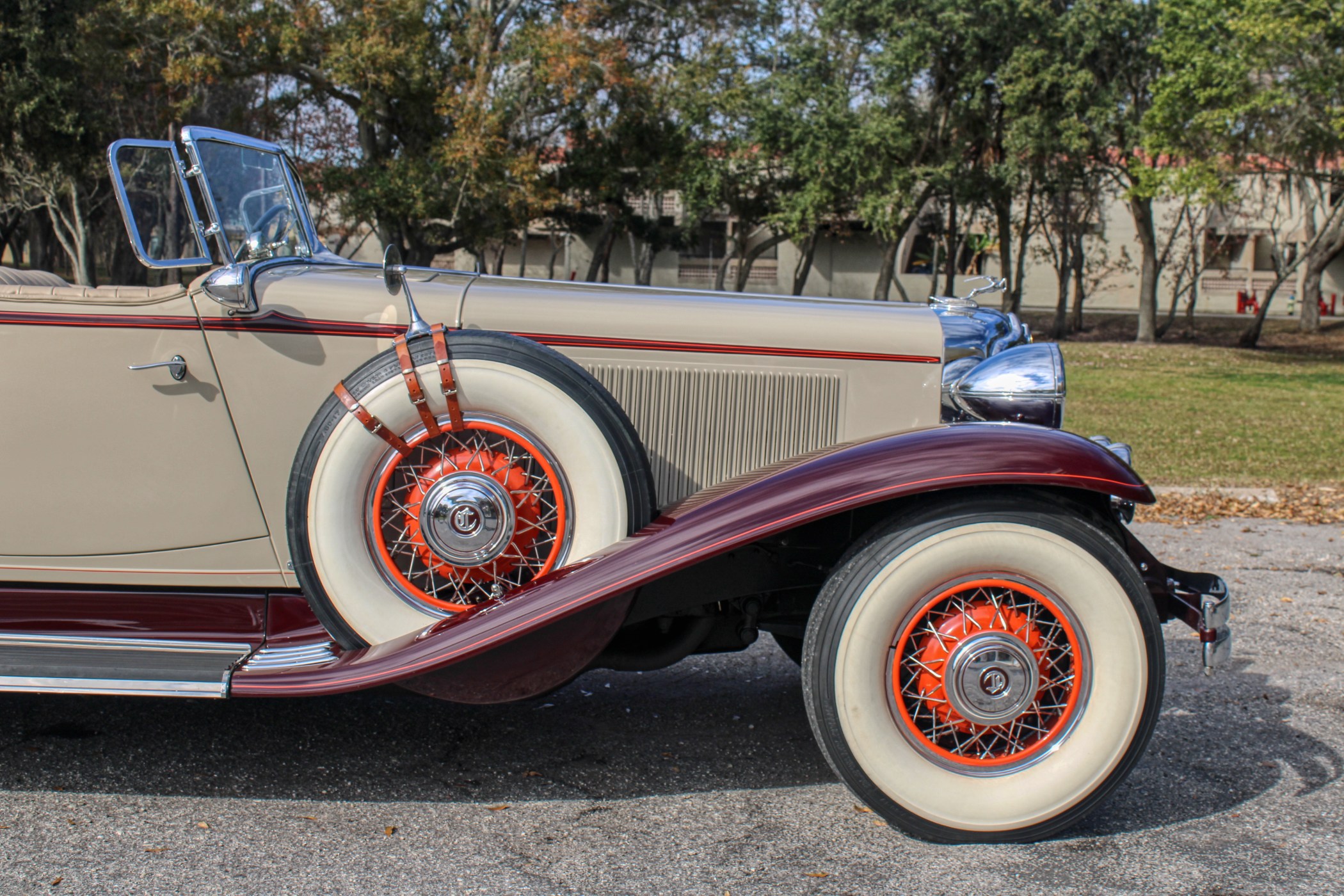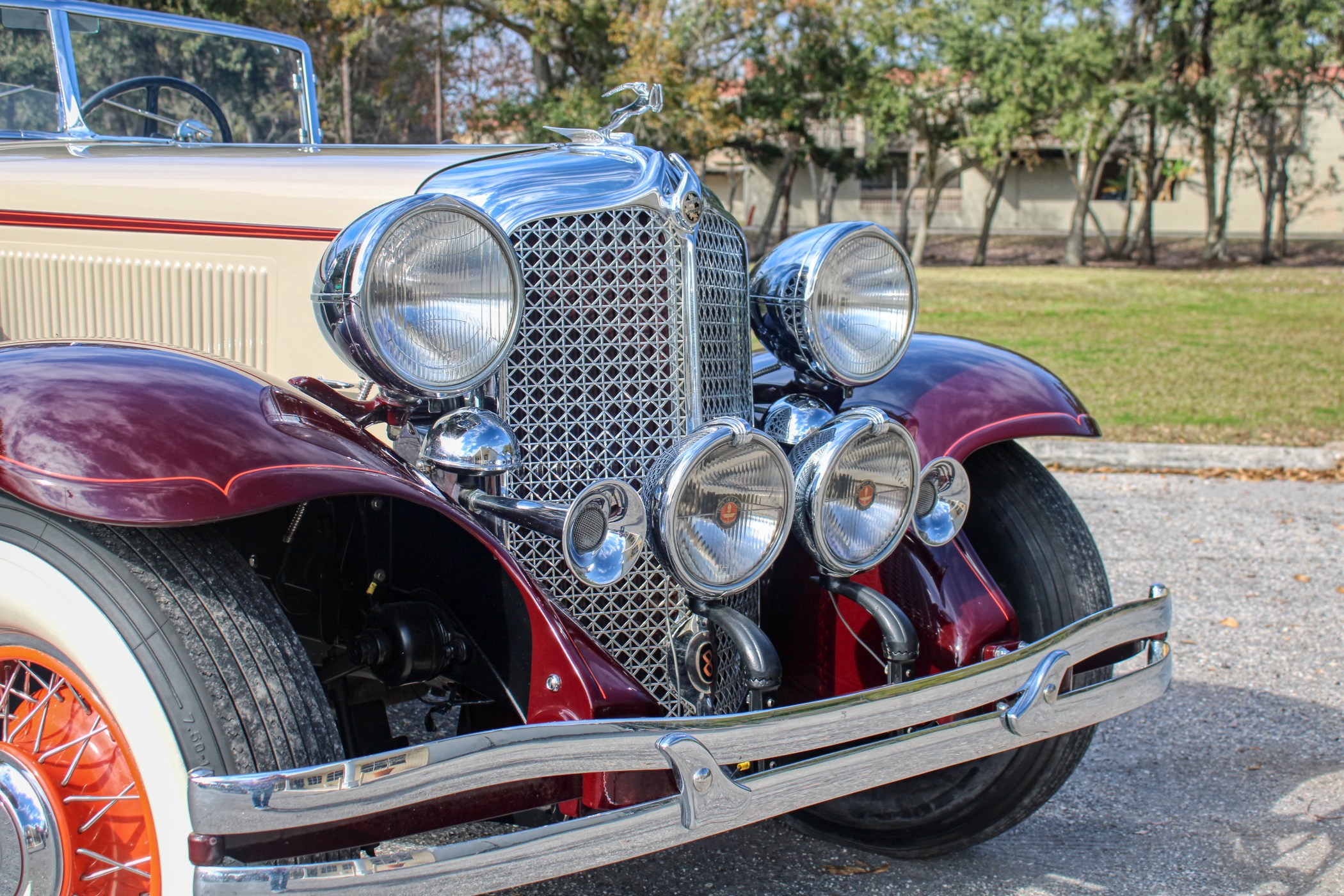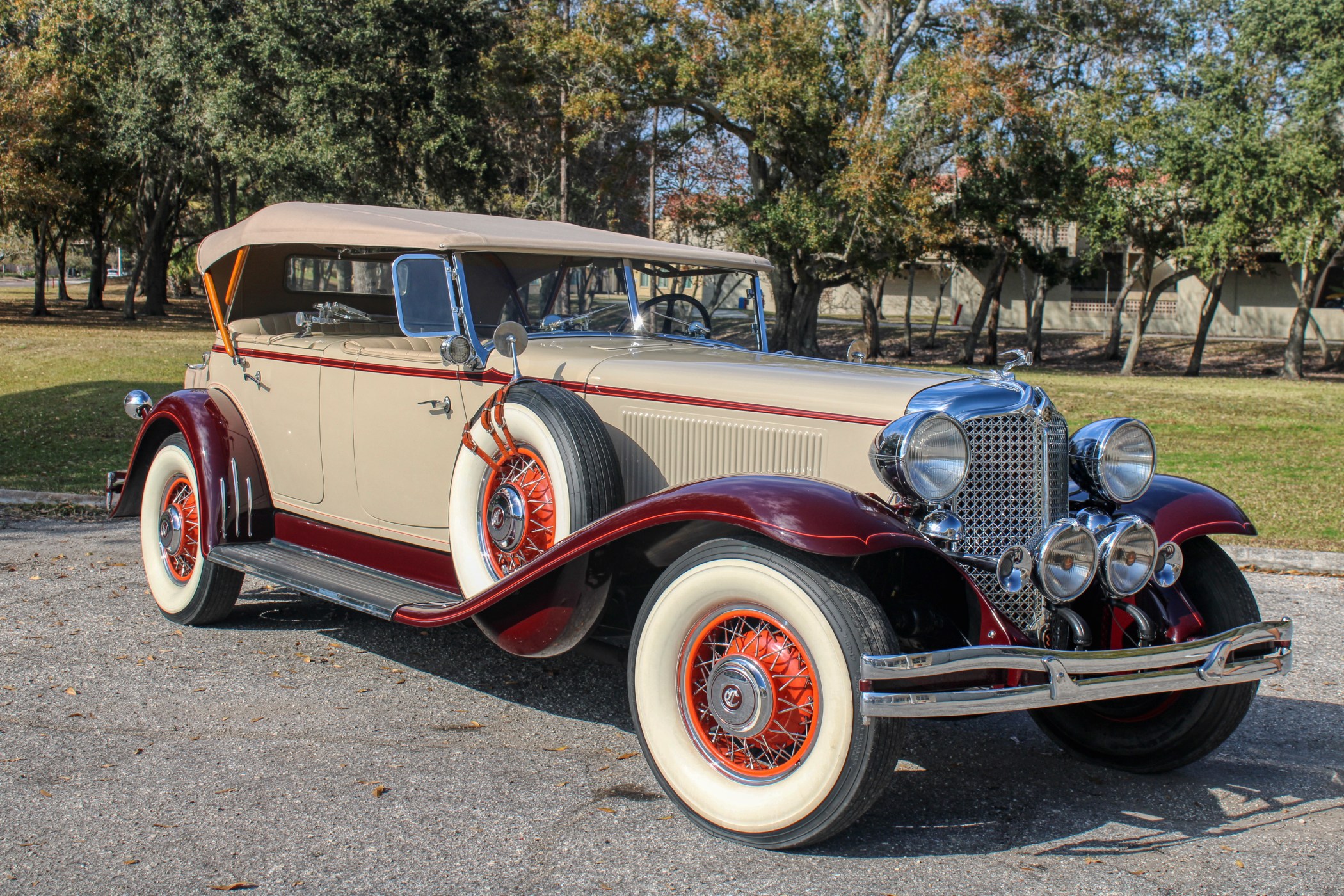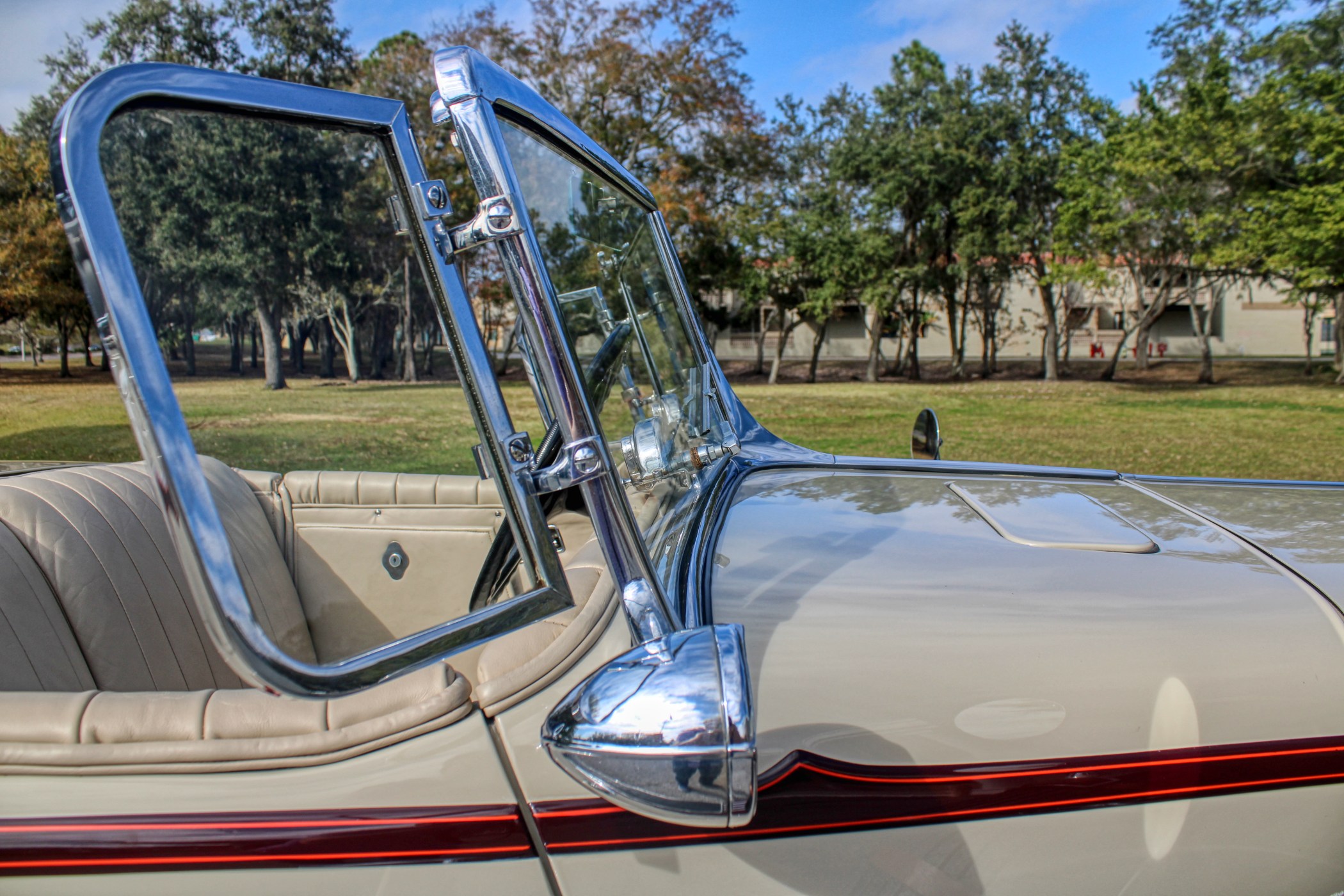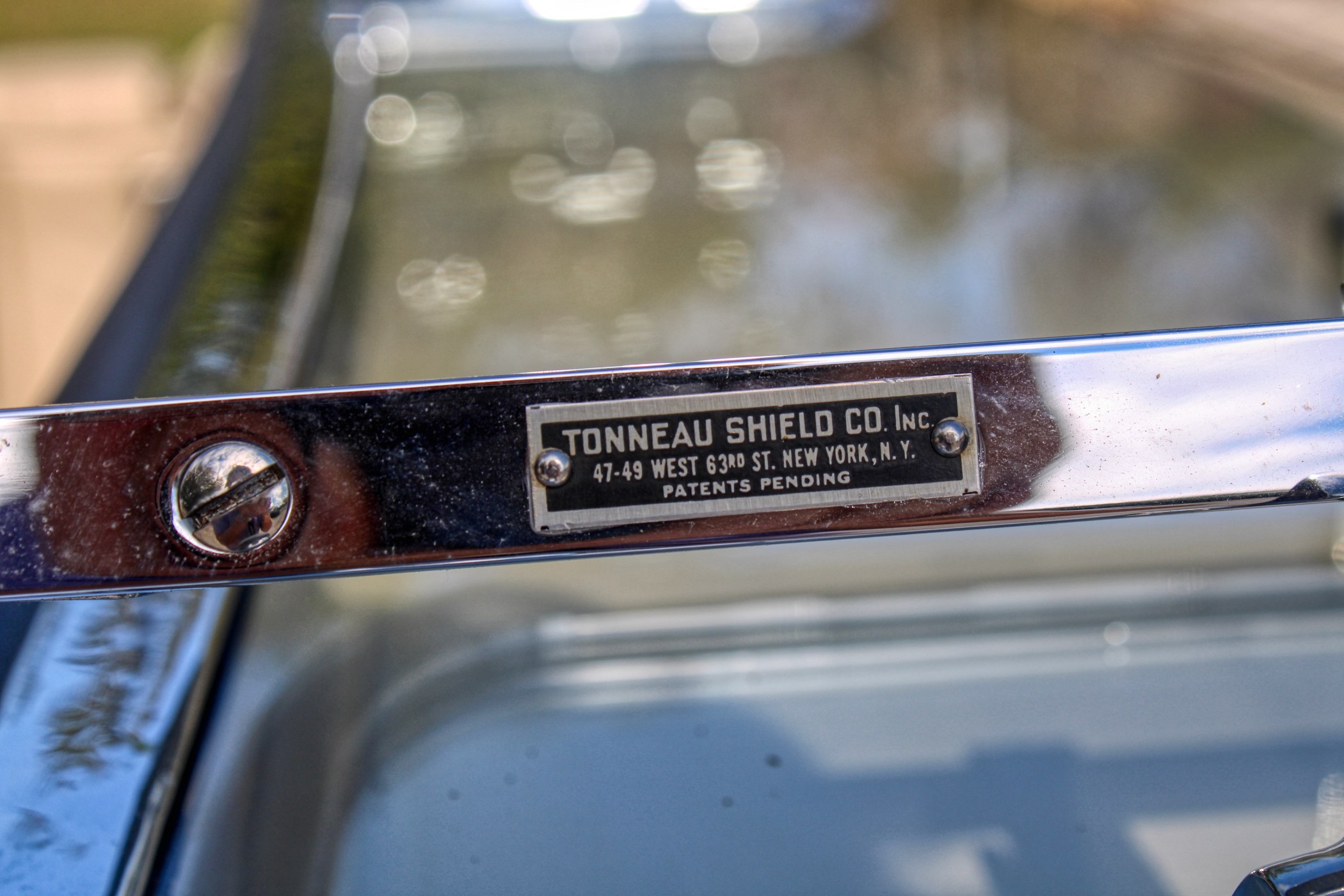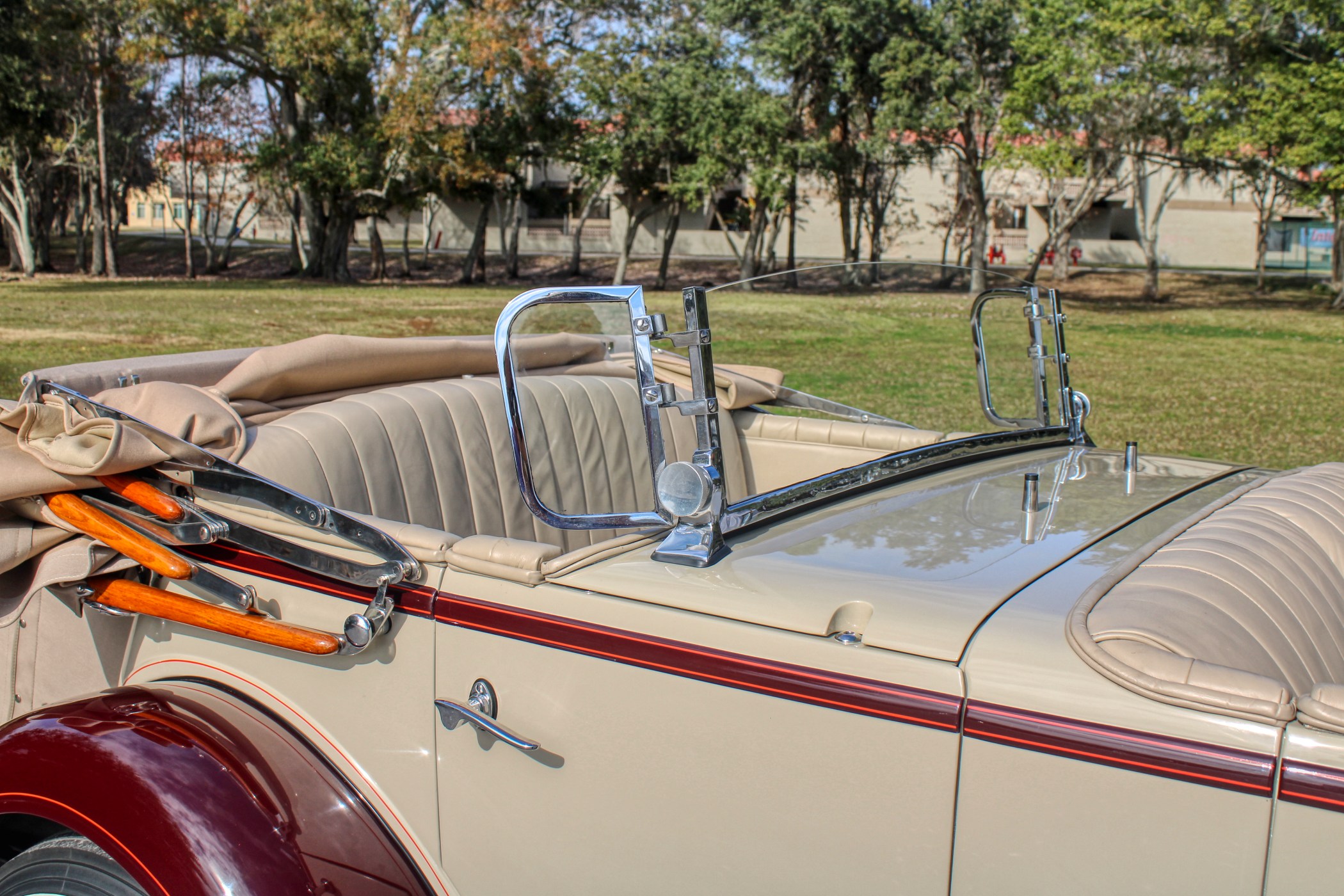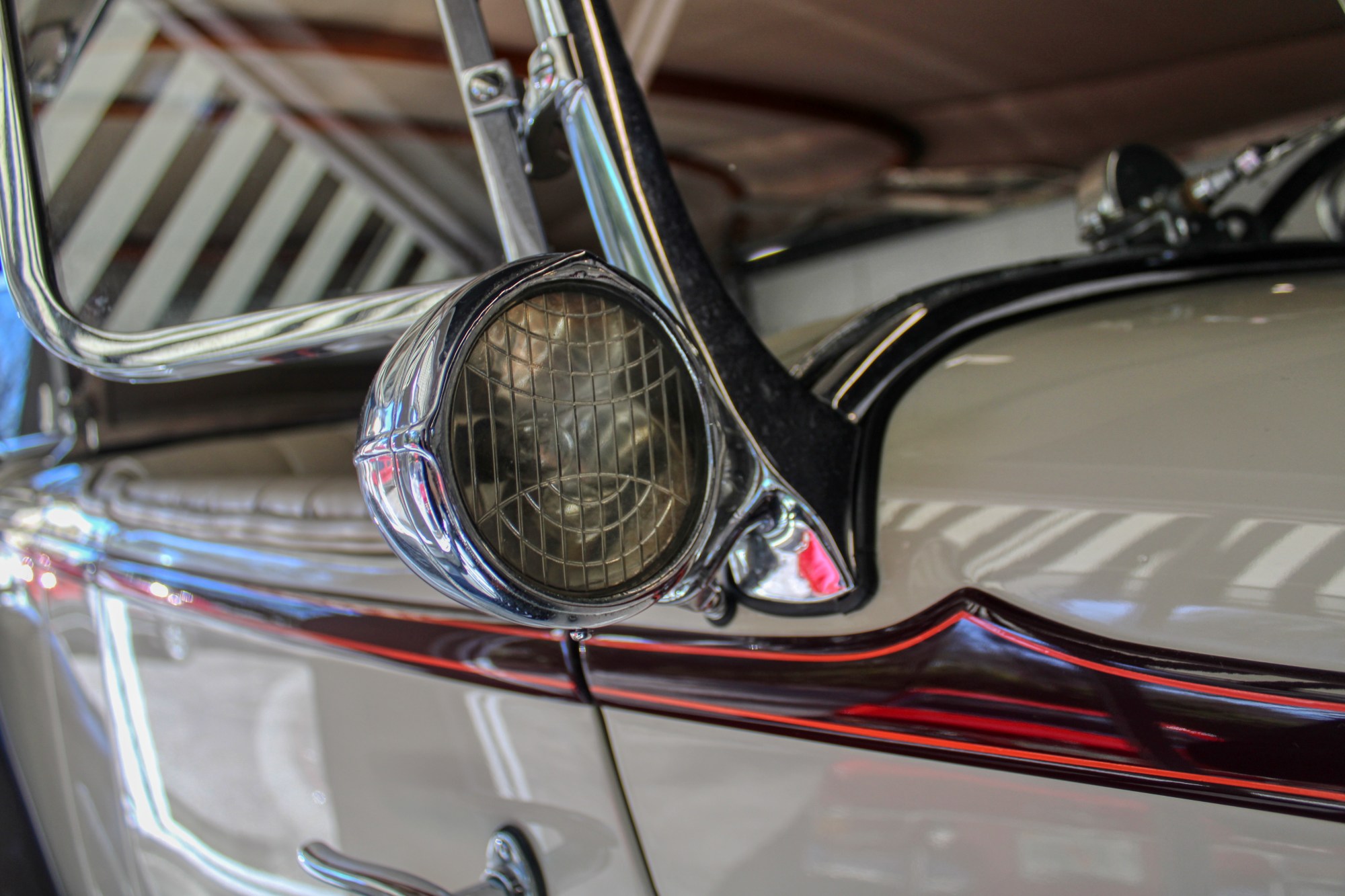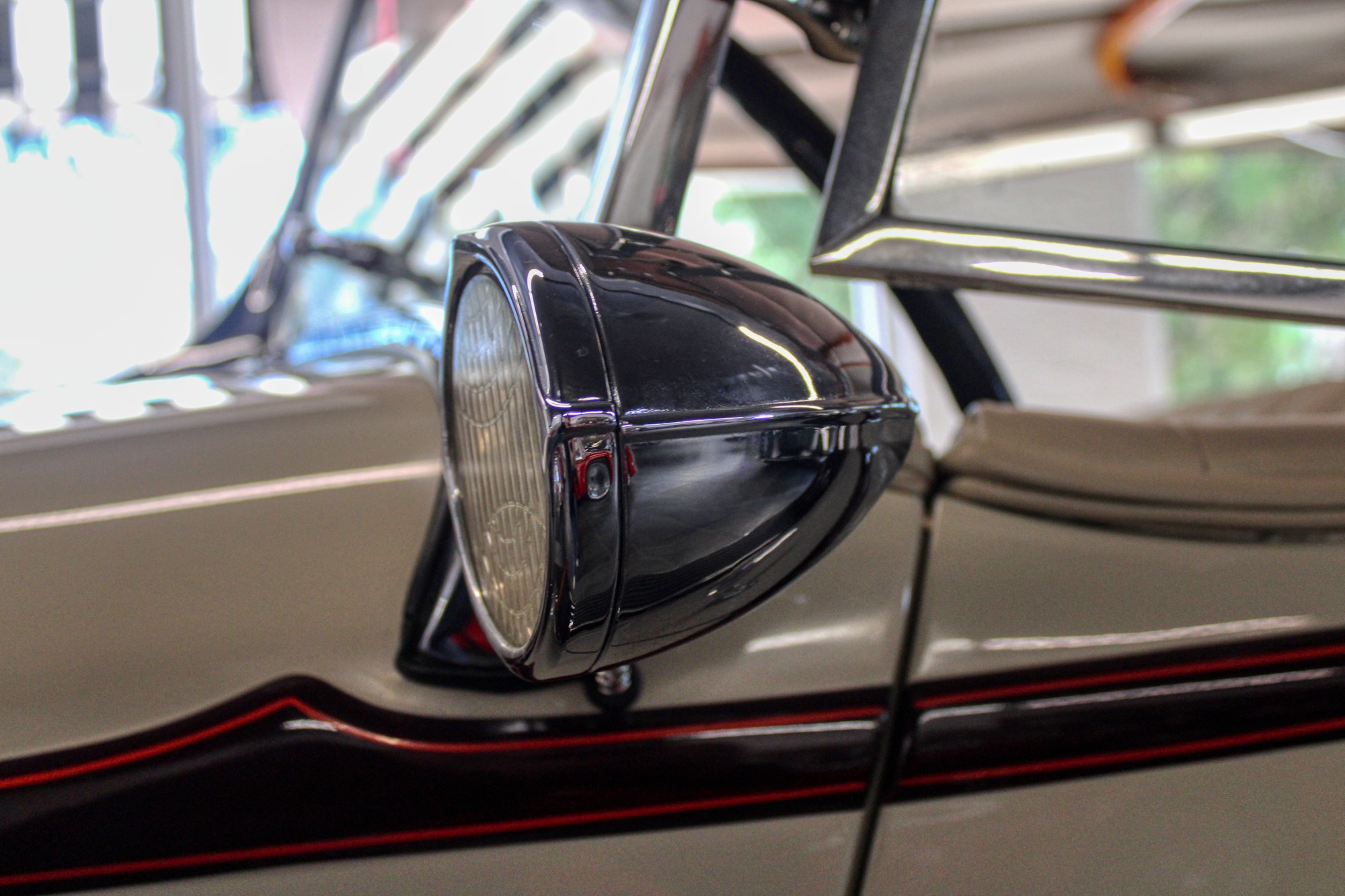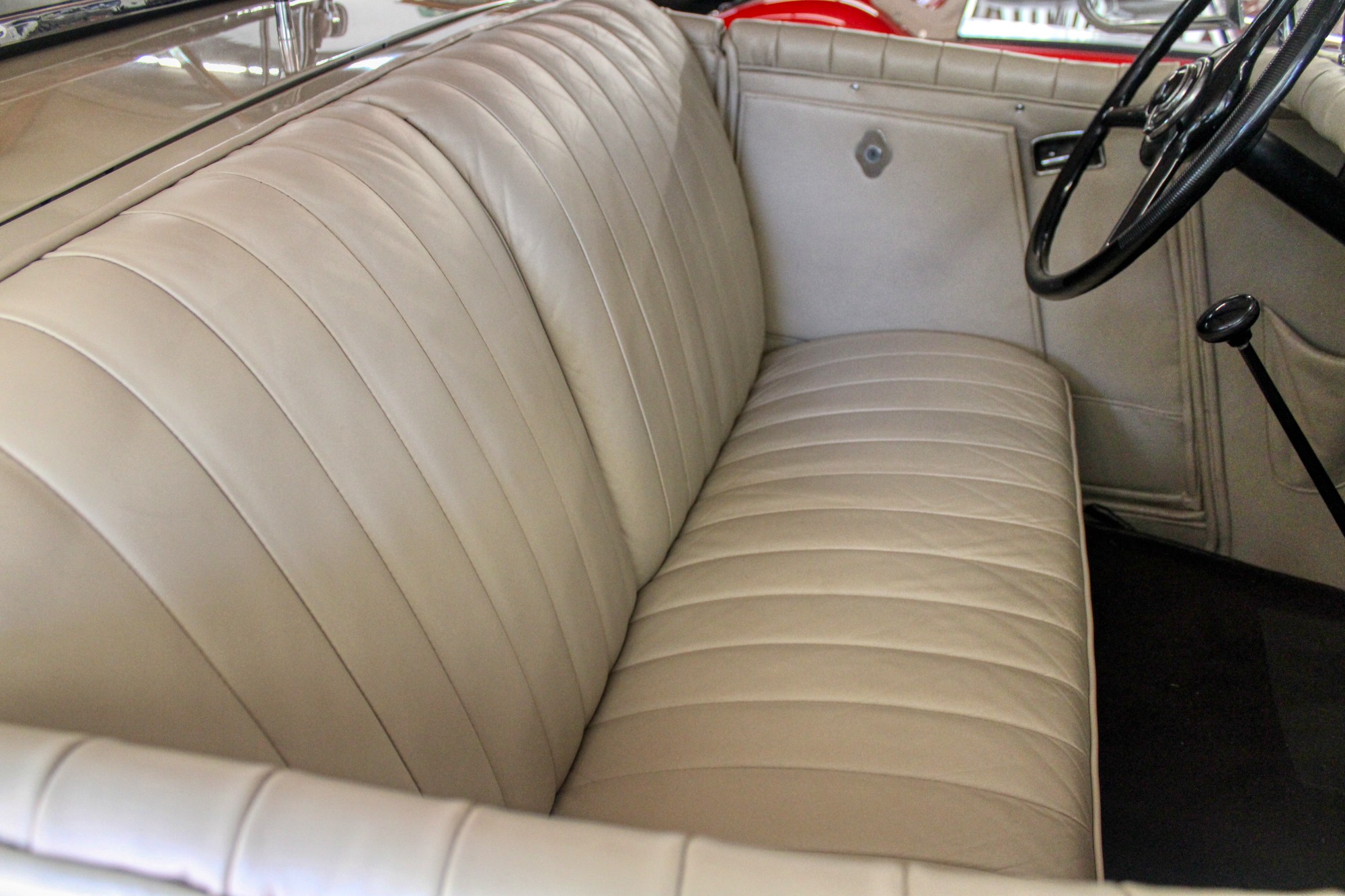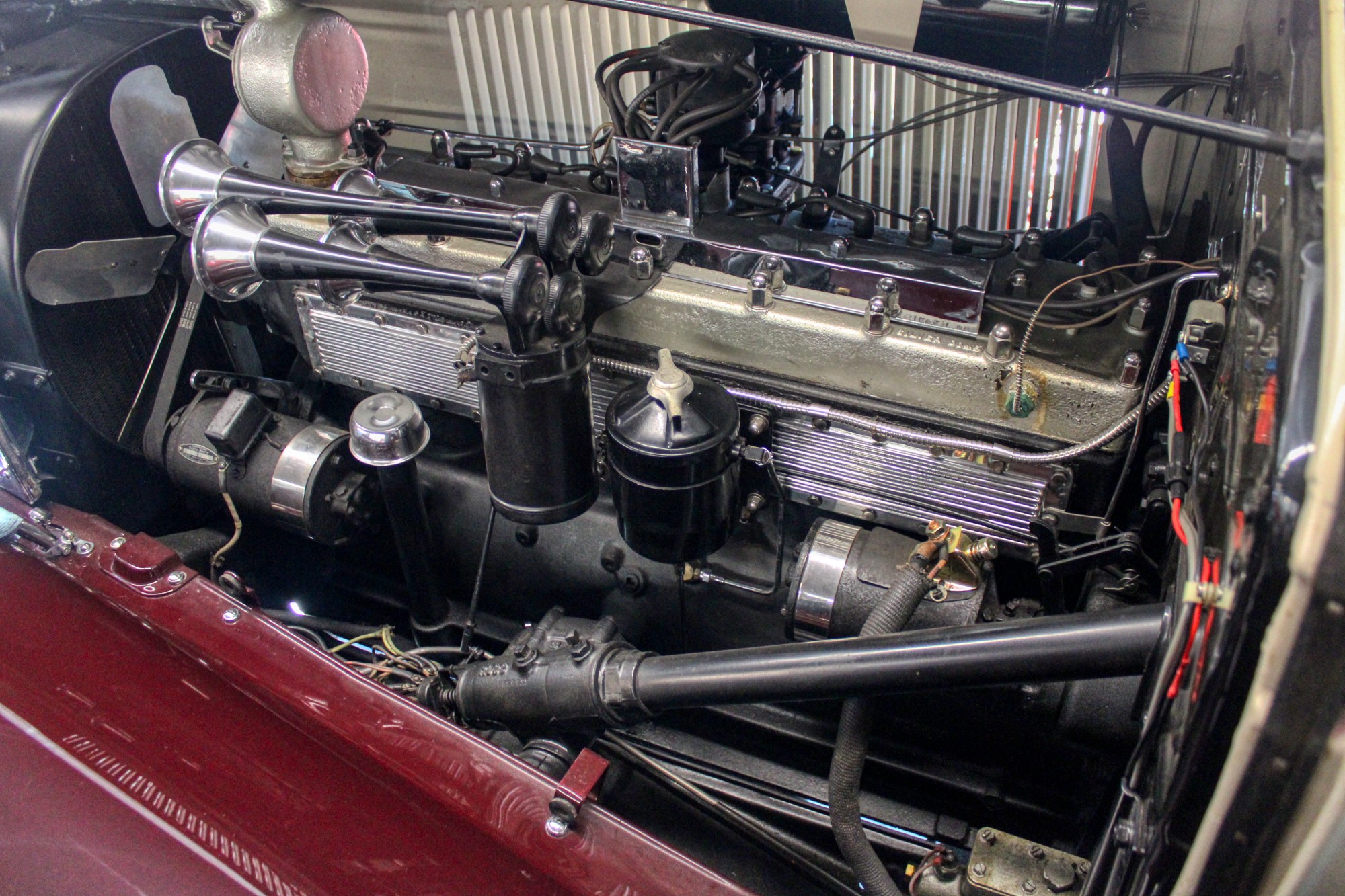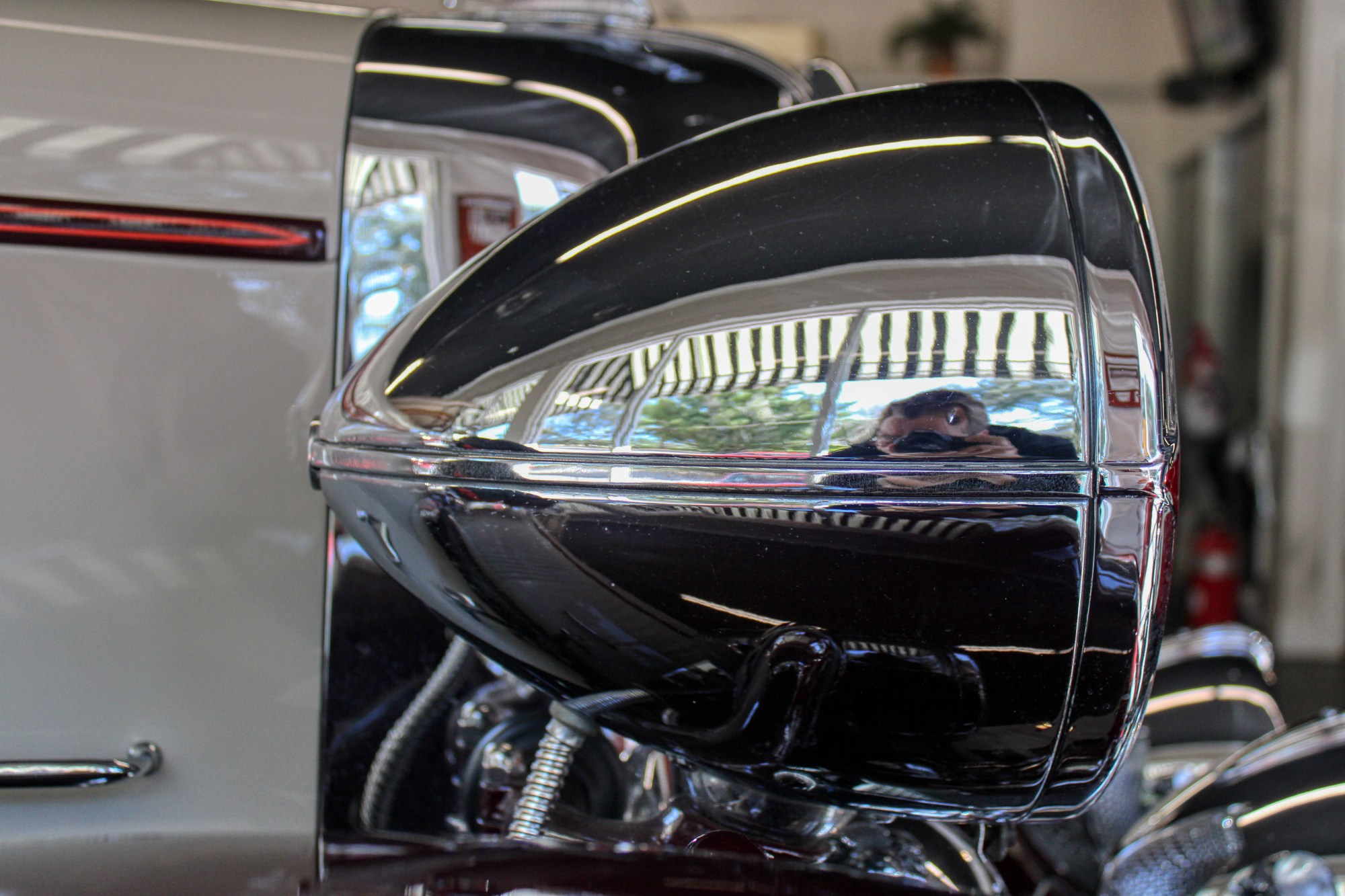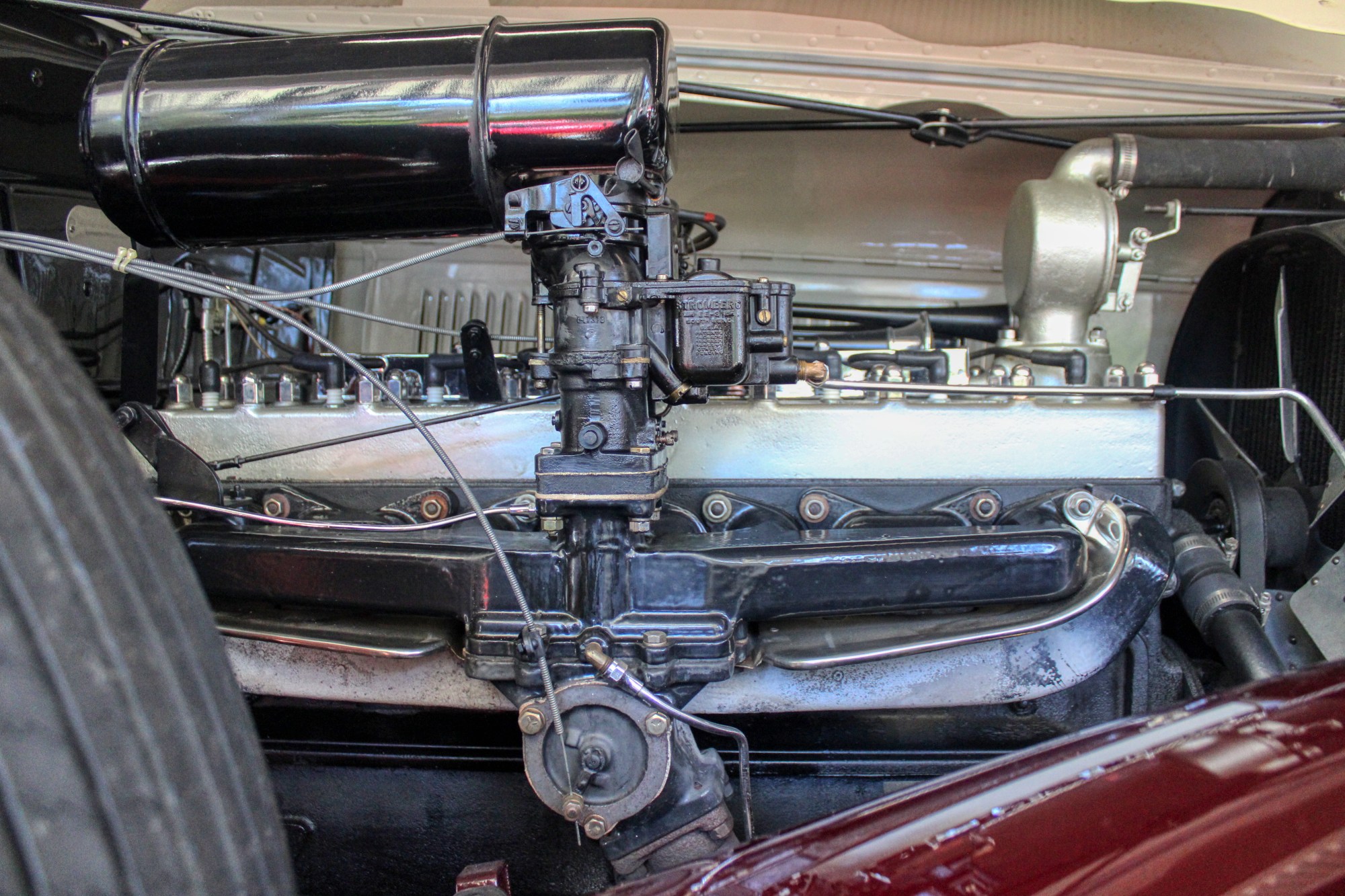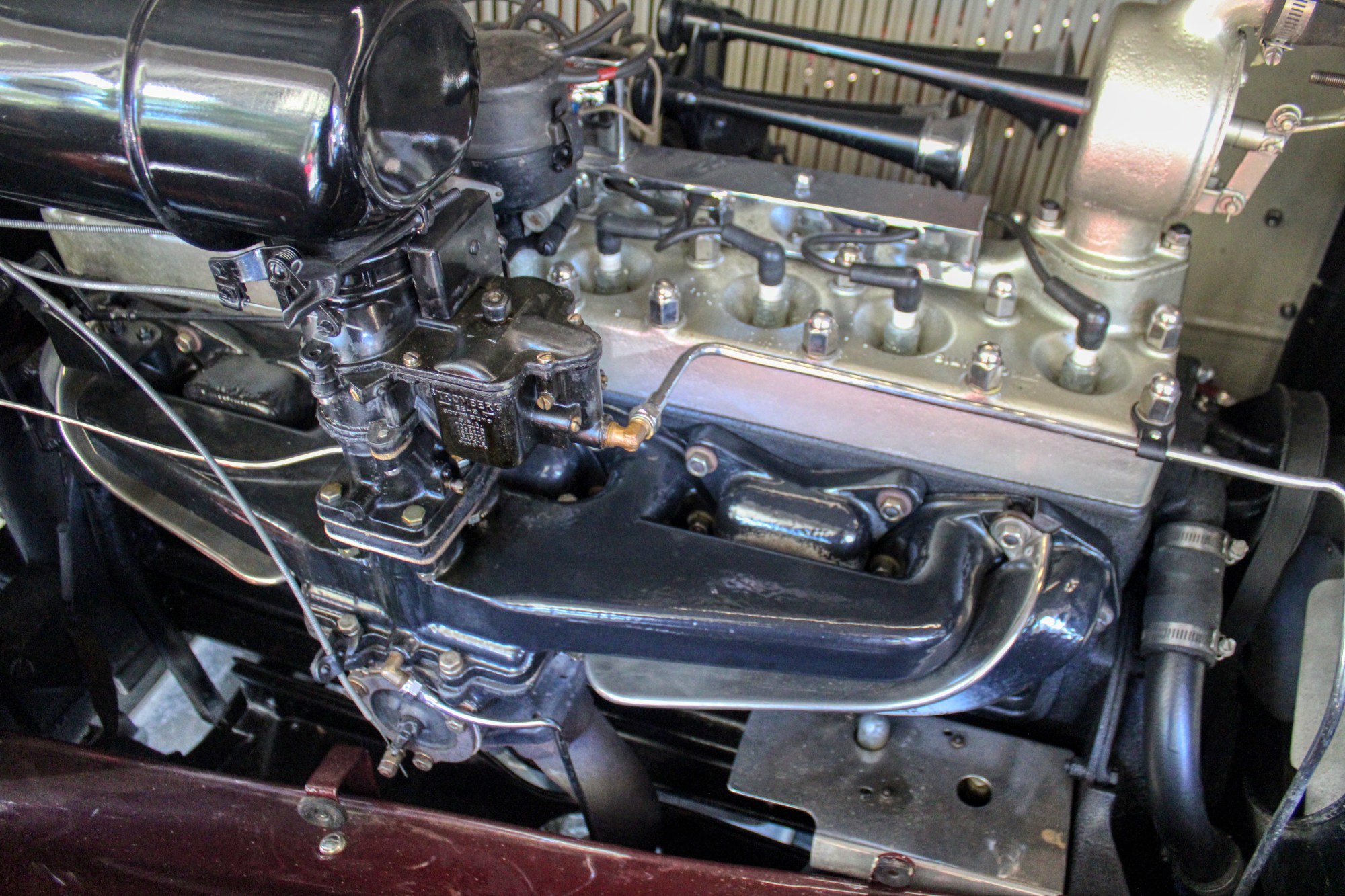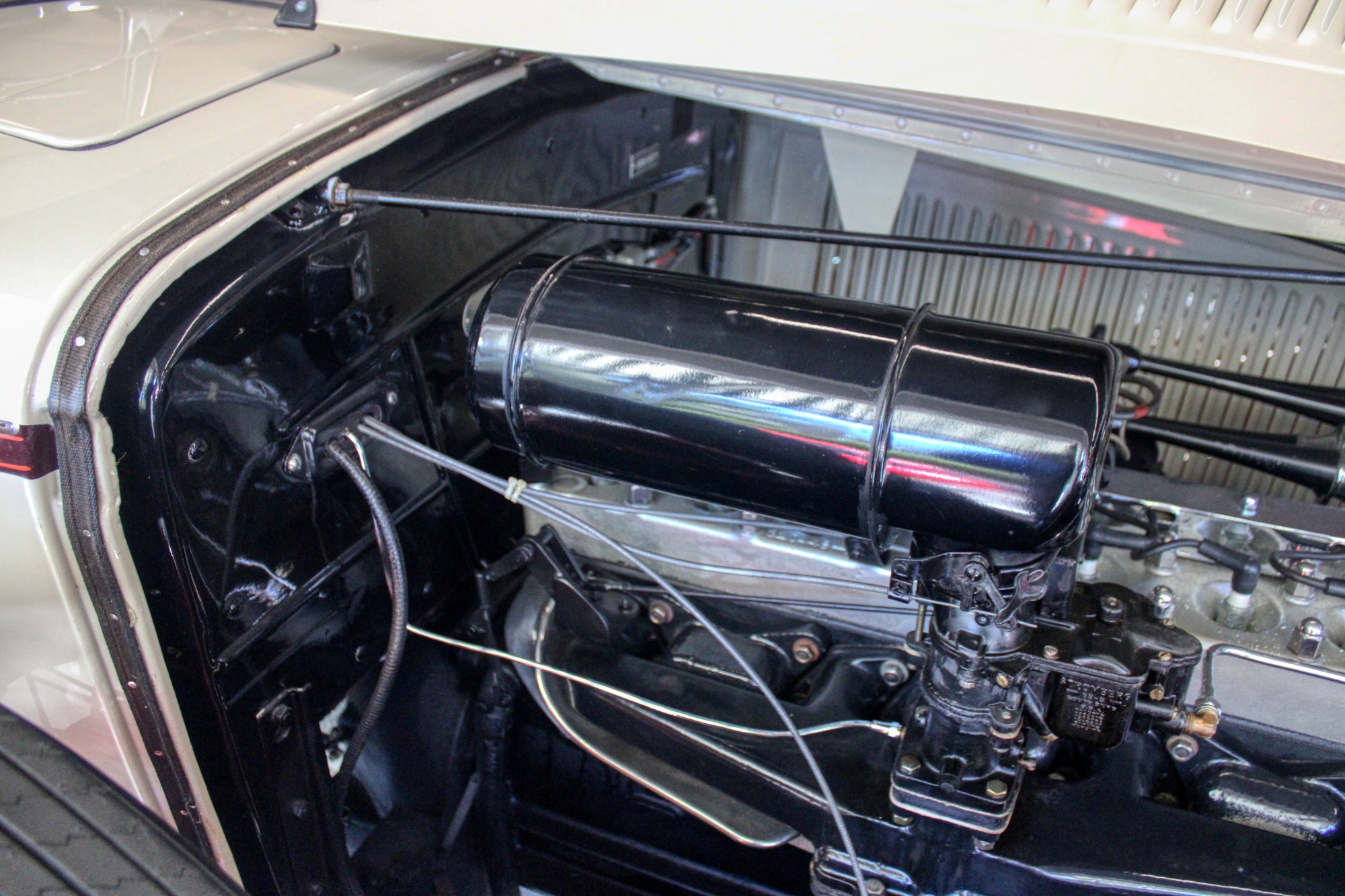1931 Chrysler Imperial CG Dual Cowl Phaeton
$ 179900
| Price | $ 179900 |
| Make | Chrysler |
| Model | Imperial CG Dual Cowl Phaeton |
| Year | 1931 |
| Mileage | |
| Ext. Color | Light Sand beige with Burgundy Fenders |
| Int. Color | Light Sand beige Leather Interior |
| VIN |
1931 Chrysler CG Imperial Dual Cowl Phaeton
Coachwork by Ed Perkins in the Style of LeBaron
CG Series. 125 hp, 384 cu. in. L-head inline eight-cylinder engine, four-speed synchromesh manual transmission, beam front axle and live rear axle with front and rear leaf springs, and four-wheel hydraulic drum brakes. Wheelbase: 145″
– The epitome of Chrysler’searly engineering and styling prowess
– Universally regarded one of the most beautiful Imperials produced
– Rare with extremely short production run for 1931 only
– Classic Car Club of America (CCCA) Full Classic® recognition and event eligibility
– Multiple award-winning restoration from 1995, properly stored and maintained
– Previously owned by noted Imperial collector/restorer, Ed Perkins
– Restored and rebodied by Mr. Perkins during the early 1980s
– Cosmetically and mechanically refreshed in 2014 with input of from Mr. Perkins
– Advanced engineering and renowned driving experience
– Ready to tour, show, and enjoy!
Rightly considered an icon of American industry, Walter P. Chrysler formed his self-named automotive marque from the ashes of the Maxwell-Chalmers merger in 1923. Beginning with a 70-horsepower Six built at the former Chalmers plant in Detroit, the new Chrysler debuted at New York’s Commodore Hotel in January 1924. Featuring hydraulic brakes, a tubular front axle, aluminum pistons, and full-pressure lubrication, the new Chrysler represented the best and latest thinking in automobile design at introduction – a tradition that would continue throughout company history. Delivering strong performance at a medium price point, Chrysler enjoyed immediate success with 32,000 produced by the end of 1924.
In addition to their remarkable performance and durability, further attention was generated by new hill climb and speed records set by Indy legend Ralph De Palma with the new Chrysler in 1924 and 1925, establishing a stellar motorsports record that continues today. International acclaim came in 1925 when famed British record-setter Sir Malcolm Campbell hit 100 mph at Brooklands with a streamlined Chrysler. The company’s first 24 Hours of Le Mans entries came in 1928, the year Chrysler acquired Dodge Brothers, with Chryslers finishing a credible 3rd and 4th in class, followed by 2nd, 3rd, and 4th at the Belgian 24-hour Grand Prix – fabulous results for such a young company on its maiden outings. That enviable competition record would continue in earnest with a succession of events through the early 1930s, including the debut of a Chrysler-powered entry at the 1930 Indianapolis 500.
At the turn of the 1930s, Chrysler introduced the mighty Imperial Eight and continued to update and reorganize its core six-cylinder offerings. At the top end of Chrysler’s model range was the eight-cylinder CG Imperial, a premium model featuring a 145-inch wheelbase chassis, ideal for a wide array of factory-built Standard Line and coach built Custom Line bodies by LeBaron. Considered one of the best-proportioned and attractive automobiles of its era, the CG Imperial’s basic styling was penned by Al Leamy, the self-taught design genius responsible for the Cord L-29. As with the L-29, the CG Imperial was dramatically long and low, featuring gracefully swept fenders and a striking vee-shaped chrome radiator shell. All Chryslers had a well-deserved
reputation for performance, and the CG Imperial’s 385 cubic-inch “straight eight” did not disappoint, with a robust 125 horsepower rating. Their smooth four-speed synchromesh transmission, four-point engine mounts, hydraulic brakes, well-tuned suspension, and advanced steering geometry ensured that they were also quite refined to drive, with a surprisingly easy and comfortable experience. Introduced in July 1931, the CG Imperial was only produced through that December, with a few completed as 1932 models with only 85 1931 CG Imperial Dual-Cowl Phaeton built. According to marque experts, just 3,228 examples of the CG Imperial in total in all body styles were produced in all.
Without doubt, one of the most beautiful of all CG Imperials for 1931 was the dual-cowl phaeton, styled by Ralph Roberts for LeBaron. An adventurous design with dual windscreens and a two-compartment interior layout, reminiscent of contemporary open-cockpit aircraft and elegant wood-hulled speedboats, LeBaron’s coachwork was adorned by leather upholstery that wrapped over the cowl and doors to create a comfortable and luxurious ambience. Just 85 examples were produced, and the design’s enduring attractiveness reportedly inspired the world-famous logo of the Classic Car Club of America (CCCA).
This dashing 1931 Chrysler CG Imperial was purchased by our consignor in 2001 and continues to benefit handsomely from previous ownership by the highly respected Imperial collector and restorer, Ed Perkins of Guilford, Connecticut. To Imperial aficionados, Mr. Perkins is well known as a restoration specialist in Chrysler CG,CH,CL Imperials and the Cadillac V-16. Beginning with a CG Imperial limousine, Mr. Perkins used an original rear windshield and recast LeBaron V-split windshield with forward chrome trim. According to a letter on file from Mr. Perkins to the current owner, the CG Imperial was sold by him to Jarv (Jarvis) Barton in the late 1980s. In 2014, the Imperial underwent a professional and extensive cosmetic freshening performed at Hoyt’s Auto Restoration Services of Sarasota, with expert input from Ed Perkins, ensuring a high degree of authenticity. Work included complete paint refinishing and restoration and re-plating of the Imperial’s signature chrome items, including the bumpers, grille shell, instrument ring, convertible top frame bows, plus installation of a new complete convertible top, new carpets, leather reconditioning, installation of new windscreen glass, and windshield chrome refreshing. The eight-cylinder engine was repainted, the brakes, fuel pump, starter, and generator were serviced, and the engine was tuned. Subsequent includes the installation of a new clutch in 2016.
The CG Imperial’s attractive and elegant LeBaron style open coachwork is finished in Light Sand beige with Burgundy fenders and trimmed in Light Sand beige leather, conferring an undeniable “Jazz Age” presence throughout. A Burgundy beltline rib and fine pinstriping to the sculpted fenders add additional appeal. Desirable period accessories are numerous, including Chrysler’s Imperial Gazelle radiator mascot, a chrome grille guard, dual Trippe lights, dual chrome horns, dual side-mounted spare tires with side view mirror mounts, dual cowl lamps, dual windscreens with wind wings, a correct CG Imperial form-fitting rear trunk with leather covering. Orange wire-spoke wheels with chrome hub caps and rims mount a set of Lester wide whitewall tires all around. Full instrumentation monitors the Imperial’s vital functions.
Renowned since new for delivering an outstanding, user-friendly driving experience, the rare CG Imperial is an ideal CCCA Full Classic® automobile, ready for a wide array of shows, events,
and classic tours. Four speed transmission with what was referred to as manual overdrive allowing for higher speed touring. Expertly restored and maintained, it has proven quite enjoyable for the current owner, who has driven it monthly with 1,600 miles added to the odometer since 2021 alone. In short, this dashing 1931 Chrysler CG Imperial is simply a wonderful example of what many collectors regard the pinnacle of Chrysler engineering and style during the Classic Era.



